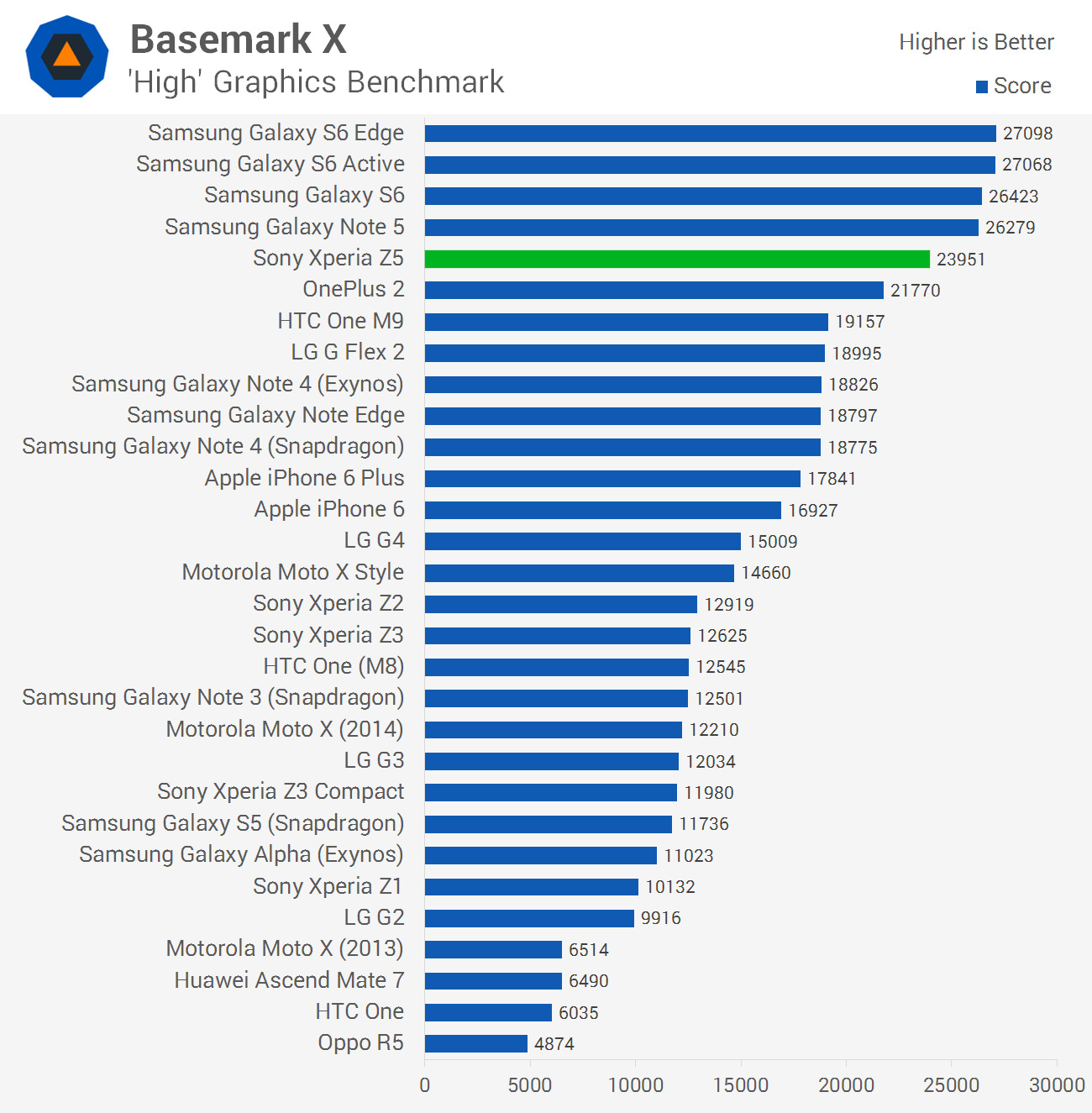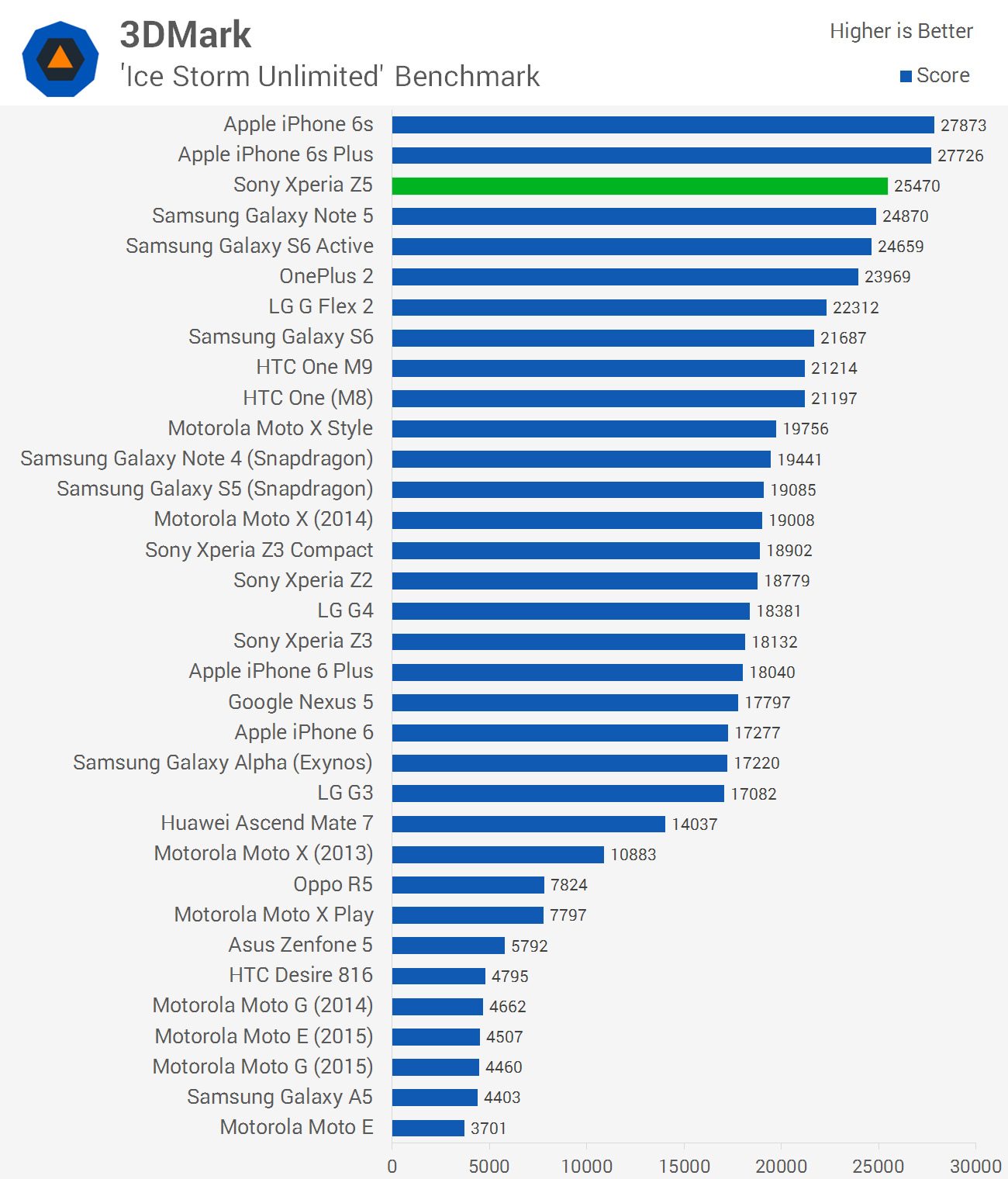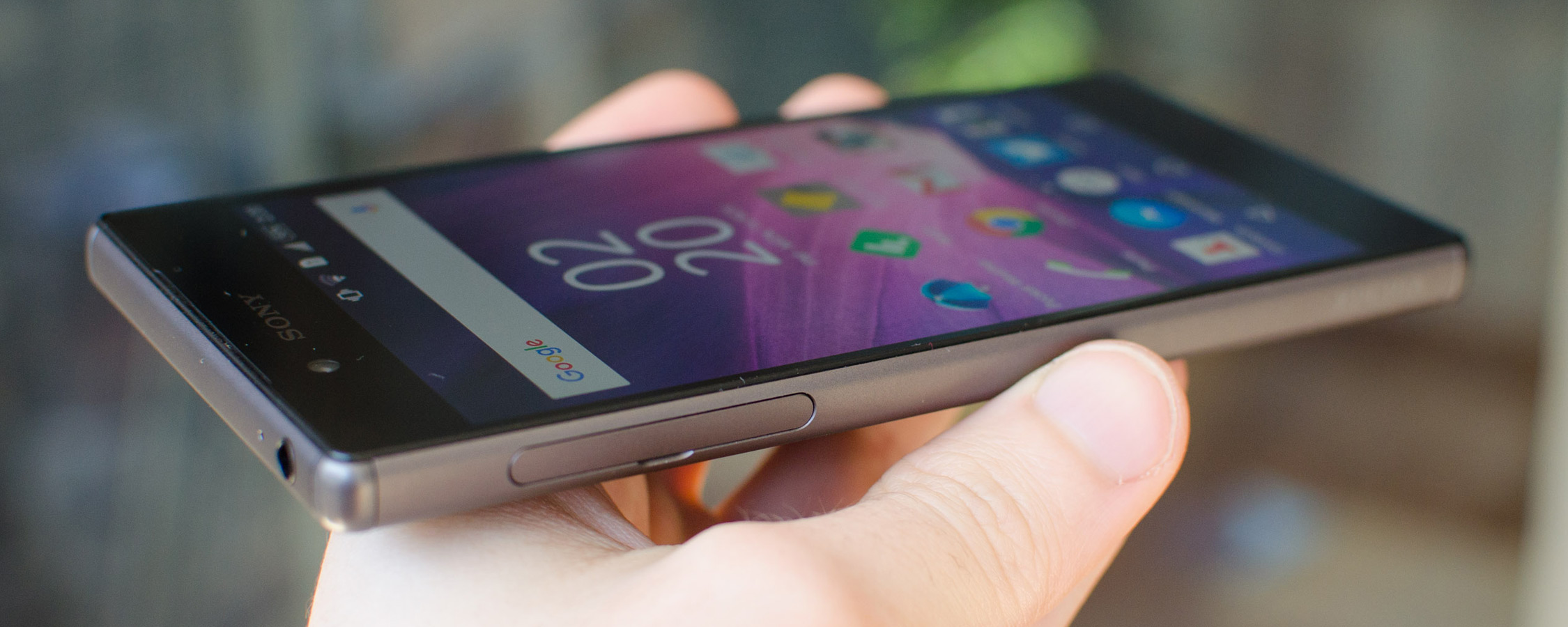GPU and NAND Performance
In games, I had no issues running everything perfectly on the Xperia Z5, including graphically intensive games such as Grand Theft Auto: San Andreas. The combination of the Adreno 430 GPU and a 1080p display is perfect for gaming, especially if the OEM has managed to keep throttling to a minimum.
Let's take a look at some benchmarks




We're seeing a GPU performance boost of 72% over the Xperia Z3, 74% over the Xperia Z2, and 105% over the Xperia Z1, making the Z5 a good upgrade on any of these handsets. It's also 12% faster than the Galaxy S6 in raw performance, which increases to 96% on-screen considering the decrease in resolution from 1080p to 1440p. Like with CPU performance it's also the fastest Adreno 430 I've benchmarked.
The Xperia Z5 comes with 32 GB of internal NAND by default, which is a good upgrade on the 16 GB we used to get in devices like the Xperia Z3. Quite a lot of space is taken up by system files (9.42 GB to be exact), leaving users with 22.5 GB free out of the box. There's also support for up to 200 GB microSD cards, which is great for expanding upon the storage in this device without spending a fortune.


Performance from the Xperia Z5's NAND is mid-tier, which probably contributes to general system performance lower than the Galaxy S6 and other competing devices. The internal storage isn't slow, but it's simply not hitting the top-end speeds that we're getting from other high-end handsets on the market.
